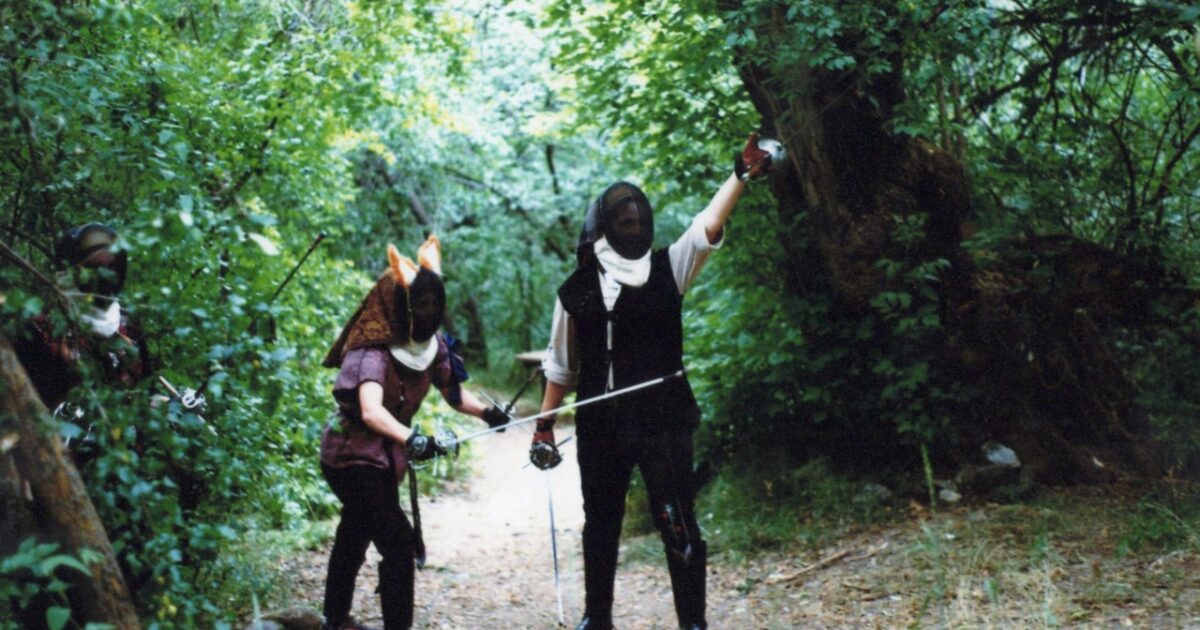Building Confidence is a Common Struggle
In last week’s, Woodland Watch: Setting Goals, we discussed how to make SMART Goals and why it is important to work on only one thing at a time. We identified the need to have a plan and clear, well defined steps to reach a specific overall objective. This process is extremely helpful with physical and tangible goals. However, some goals are less concrete. For example gaining and building confidence.
From the survey responses I received, 25% of fencers mentioned that they would like to work on their confidence (if you have not taken the survey, we would still love to hear from you using the 2018 Fencing Season Survey).
25% is a significant amount of our fencers that feel they lack confidence, or would like to improve their confidence while fencing. I feel increasing confidence is a worthy goal to strive for because building confidence is a common struggle we all experience in fencing and in life.
My goal with this article is to define what confidence is, apply it to fencing, and share a process I know will help you increase your confidence. Taking an intangible idea and making it concrete is the first step to facing any challenge. If you follow this process I know it will boost your confidence.
Defining Confidence
Confidence is defined as:
- the feeling or belief that one can rely on someone or something; firm trust.
- the state of feeling certain about the truth of something.
- a feeling of self-assurance arising from one’s appreciation of one’s own abilities or qualities.
Confidence is not a fixed attribute. It is not something a few lucky people are born with and the rest of us suffer without. It’s a feeling. Confidence is the outcome of your thoughts and actions. It’s the belief in your eventual success, combined with a realistic assessment of your current ability, and dedication to improve.
How Building Confidence Works
Searching online, “How to Start Building Confidence,” gets a lot of mixed results. Superficial answers include:
- Repeat a positive phrase until you believe it
- Just accept yourself
- Don’t use negative self-talk
These results, while all good and useful, do not address the core issue. To truly build confidence, you need an solid understanding of where you are and what is required to achieve your goal of confidence. Only then can you build real confidence. The following simple equation gives us the solution to address the core issue:
Self-Belief X Evidence = Confidence
The equation states that your level of confidence is equal to your core self-belief multiplied by the evidence presented. So if you want to build confidence you have to understand how you feel about yourself and your abilities then gather enough evidence to overcome your doubts.
Self-Belief
Breaking down the equation to better understand its component parts begins with Self-Belief, with an emphasis on Self. Take time to realistically assess how you view yourself in terms of fencing. This is a very personal, but critical process when trying to build confidence. This process takes time and you should be trying to discover a few different things. The following are helpful examples, but by no means all encompassing, of things to consider as you try to understand your own Self-Belief.
- Honestly evaluate if you have a high sense of self-belief or a low sense of self-belief.
- Define your belief in yourself and your fencing abilities.
- Determine in what areas of your fencing you lack confidence, and why.
- Evaluate aspects of your fencing in which you do have confidence. Consider why.
- Analyze how you feel when you fence. Think about times when you feel you are performing best and when you have the least confidence.
Be realistic, not self abusive, as you go through this process. There is little value in needlessly upbraiding yourself. Your Fencing Journal can be a great place to work through this self-analysis. That way you can record your thoughts and feelings now and then review them after a few months to see how far you’ve come.
Never forget to include what you feel your strengths are in this exercise. You might have extremely good footwork, great point control, or an awesome attitude and those will be the starting points for gathering evidence in areas you need work on, which is the second piece of the equation.
Evidence
Evidence is any experience or interaction with yourself or with others as it pertains to a certain skill. Every compliment, positive self-talk, quality training, and success is an example of positive evidence that can build your confidence. On the other hand, every insult, negative self-talk, wasted practice, or setback can be a negative influence on your confidence, if you allow them to. After understanding your Self-Belief, you’ll need to begin gathering evidence. More evidence in areas you have a low Self-Belief and less in areas you have a high Self-Belief.
Gathering Evidence to Overcome Low Self-Belief
There is nothing wrong with having a low Self-Belief, if it is an honest assessment and you don’t allow it to defeat you. We all doubt our skills and abilities in some aspect of our lives. It is human to recognize our weakness. But it is also quintessentially human to improve. For me, I tend to doubt myself in social situations. I compare myself to friendly, outgoing, and loquacious people a lot. I never feel like I can live up to their personability and jovial nature. They are just too darn fun to be around and I’m frankly, a little intense.
Having this weakness and realistically assessing it means I have the opportunity to develop a sense of confidence in those skills or situations. Using the equation, in this situation, means that I need to look for more evidence. For example, to build my confidence in social situations, I try to notice when I get someone to laugh or smile instead of focusing on my inability to be a social butterfly. This is a simple way of gathering evidence.
Gathering evidence is an ongoing process and one that you can easily get help with. When you’re struggling, find something positive that lifts you up. Ask a trusted friend what they think you’re doing well in. Let them know you need a pep-talk every now and then. Alternatively watch something that inspires you. Fall back on something you know you can do and give yourself a mini-victory. These are just a few examples of gathering positive evidence. Over time, as you gather more evidence, you’ll find your confidence rising and as you maintain a base level of confidence, your self-belief will rise as well.
Additionally, if you know someone struggles with their confidence, be a source for positive evidence. This is a great way to boost your own confidence and develop a positive outlook. Point out positive evidence and compliment others often. Build people up, and be genuine as you do so. Those you help will reciprocate. Building confidence is a much easier process when done as a group. If this is something you’d like to work on, make the goal of sincerely complimenting one person at practice each week. Write down your experiences in your journal and record how you feel.
Quick Evidence I use to Boost My Confidence
My final piece of advice when it comes to building confidence is to find a few simple pieces of evidence that you can fall back on when you need a quick boost. That way when you need it, you’ll have something ready.
Two of my favorite pieces of evidence are an old commercial from my hockey days and a lesson in body language from a TED talk. Try them out yourself or use them to inspire your own personal evidence to boost your confidence.
Underdog Commercial
This simple commercial always gives me the chills! It reminds me to think like an underdog and to always believe that “passion has funny way of trumping logic.” It helps me know that I can do anything when I put my mind to it and try my hardest.
Power Poses
A simple lesson in body-language can make a huge difference in changing how we feel. As a leader, something as simple as standing tall can make all the difference. When I’m struggling, I take a few moments to make a power pose and remind myself that I am strong and can do what needs to be done.

